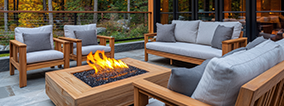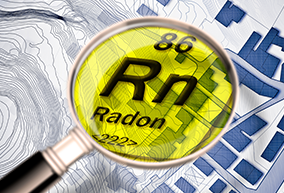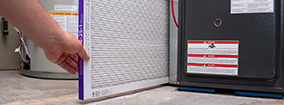We live in an increasingly fast-paced world, time flies by so quickly, and here we are, it’s almost the end of another year. Sometimes significant chunks of time can pass without us even giving thought to how we live or where. But it’s important to hit the pause button every so often and ask yourself if you are content in your life.
When it comes to your home, ask yourself if it is still meeting your needs. Is there anything that bothers you daily that you could do something about? Maybe that means updating your dated kitchen or replacing worn-out carpet. November is a great time to explore and review contractors when they are typically less busy, and you have a better chance of securing a reputable contractor and scheduling your renovations. If you need contractor recommendations, I’m happy to provide them to you.
As always if you have any real estate-related questions please don’t hesitate to reach out. Call or email today.

-Freestanding heaters are a good option if you want portability. Keep in mind to allow about 12 inches of space between the ceiling and your heater.
-Overhead heaters come in wall, ceiling, and umbrella-mounted options, which are great if you are space-conscious or concerned about burn injury.
-Firepit heaters look like a fire, minus the hassle, and some double as a coffee table.
When it comes to your home, ask yourself if it is still meeting your needs. Is there anything that bothers you daily that you could do something about? Maybe that means updating your dated kitchen or replacing worn-out carpet. November is a great time to explore and review contractors when they are typically less busy, and you have a better chance of securing a reputable contractor and scheduling your renovations. If you need contractor recommendations, I’m happy to provide them to you.
As always if you have any real estate-related questions please don’t hesitate to reach out. Call or email today.
Cozying Up Your Outdoor Oasis

If you want to enjoy your outdoor space into the winter months, an outdoor heater makes sense. So, what are the options?
-Freestanding heaters are a good option if you want portability. Keep in mind to allow about 12 inches of space between the ceiling and your heater.
-Overhead heaters come in wall, ceiling, and umbrella-mounted options, which are great if you are space-conscious or concerned about burn injury.
-Firepit heaters look like a fire, minus the hassle, and some double as a coffee table.
Outdoor heaters are fueled three different ways:
-Electric - Easiest to install if you have an outdoor power outlet but doesn’t create as much heat as its counterparts.
-Propane - Be aware you need to refill the tank when empty.
-Natural gas -Requires a dedicated gas line, which can be expensive.
-Electric - Easiest to install if you have an outdoor power outlet but doesn’t create as much heat as its counterparts.
-Propane - Be aware you need to refill the tank when empty.
-Natural gas -Requires a dedicated gas line, which can be expensive.
Note the latter two options cannot be used in enclosed patios because of the risk of carbon monoxide poisoning.
Side notes:
-Ensure the heater covers the square footage of the area you want to heat.
-Check for recognizable safety certification.
-Good safety features to look out for include a safety tilt switch for freestanding heaters (powers off if it tilts too much), automatic turn-off if it gets too hot, or cool touch glass to prevent burn injury.
-If you live in a condo, check if there are rules about using outdoor heaters.

Radon is an odourless, colourless, tasteless radioactive gas that can be present all around us from uranium breakdown in rock and soil. However, sometimes it can be present indoors at unsafe levels. When inhaled, the radon gas particles decay in the lungs, releasing bursts of energy, potentially causing lung cancer.
Radon can enter a home through cracks in the foundation, gaps around service pipes, or other openings between the house and the ground. It can be found in all types of homes, condos included. In condos, unsafe radon levels are most commonly found on the ground floor, however, it can also be found on upper floors.
The only way to know if there are unsafe radon levels in your home is to be proactive and get a testing kit or have a professional test your home. It is recommended to get the long-term test, as levels can fluctuate day-to-day. If you detect unsafe radon levels in your home a radon mitigation system can be installed and typically reduces radon levels by more than 80 percent.
So, give yourself peace of mind, and if you haven’t already, get your home tested for radon.

1. Seal air leaks around windows and doors.
Side notes:
-Ensure the heater covers the square footage of the area you want to heat.
-Check for recognizable safety certification.
-Good safety features to look out for include a safety tilt switch for freestanding heaters (powers off if it tilts too much), automatic turn-off if it gets too hot, or cool touch glass to prevent burn injury.
-If you live in a condo, check if there are rules about using outdoor heaters.
Lung Cancer Awareness Month: Radon

Did you know radon is the number one cause of lung cancer in non-smokers? With November marking Lung Cancer Awareness Month, now is an opportune time to ensure radon is not affecting you and your loved one’s health.
Radon is an odourless, colourless, tasteless radioactive gas that can be present all around us from uranium breakdown in rock and soil. However, sometimes it can be present indoors at unsafe levels. When inhaled, the radon gas particles decay in the lungs, releasing bursts of energy, potentially causing lung cancer.
Radon can enter a home through cracks in the foundation, gaps around service pipes, or other openings between the house and the ground. It can be found in all types of homes, condos included. In condos, unsafe radon levels are most commonly found on the ground floor, however, it can also be found on upper floors.
The only way to know if there are unsafe radon levels in your home is to be proactive and get a testing kit or have a professional test your home. It is recommended to get the long-term test, as levels can fluctuate day-to-day. If you detect unsafe radon levels in your home a radon mitigation system can be installed and typically reduces radon levels by more than 80 percent.
So, give yourself peace of mind, and if you haven’t already, get your home tested for radon.
Wallet-Wise and Warm: How to Save on Heating Bills

Before Old Man Winter arrives, now is the time to consider how you can save on your heating bill. Here are some helpful tips:
1. Seal air leaks around windows and doors.
2. If you don’t already have one, install a programmable or smart thermostat to program the temperature for different times or control remotely.
3. Open the curtains or blinds during the day and close them at night to keep the heat in.
4. Close doors in unoccupied rooms.
5. Change your furnace filters regularly and schedule an annual HVAC inspection to keep it running efficiently.
6. If you have a ceiling fan spin it clockwise on the lowest setting to help trapped heat move down.
7. Use a humidifier. Moist air feels warmer than dry air.
8. Ensure your vents are clear to allow the air to flow freely.
9. Wear warm clothes and use lots of blankets when resting.
10. Get cookin’. The warmth from the stove and oven will help warm your home.
11. If you have a fireplace, keep the damper closed when the coals are completely done burning, and use a draft stopper to cover the fireplace opening.
12. If you have an attic or crawl space, make sure it is well-insulated, which can save you an average of 15 percent on your heating bill.
With a little thought, you can stay toasty while saving money this winter. Happy saving!